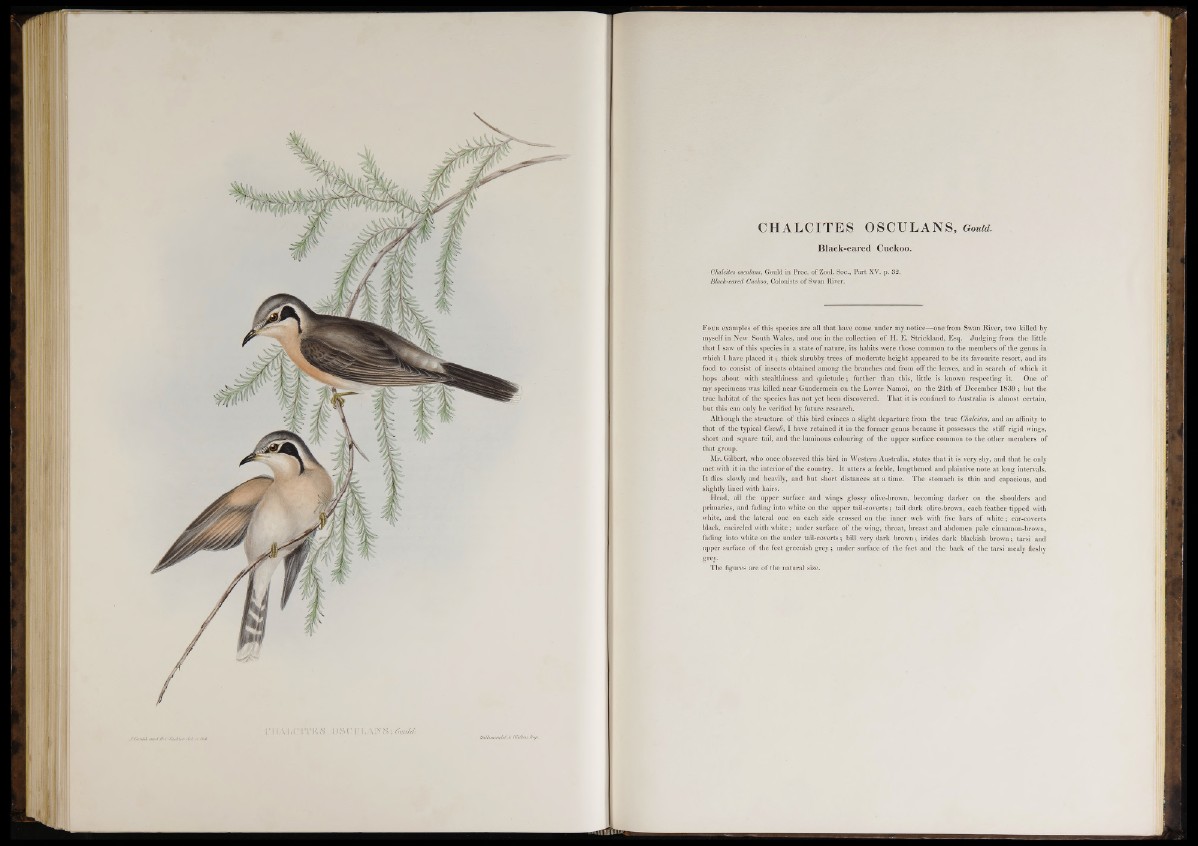
CHALCITES OSCULANS, 1
Black-eared Cuckoo.
Chalcites osculans, Gould in Proc. of Zool. Soc., Part XV. p. 32.
Black-eared Cuckoo, Colonists of Swan River.
F o u r examples of this species are all that have come under my notice—one from Swan River, two killed by
myself in New South Wales, and one in the collection o f H. E. Strickland, Esq. Judging from the little
that I saw of this species in a state of nature, its habits were those common to the members of the genus in
which I have placed i t ; thick shrubby trees of moderate height appeared to be its favourite resort, and its
food to consist of insects obtained among the branches and from off the leaves, and in search of which it
hops about with stealthiness and quietude; further than this, little is known respecting it. One of
my specimens was killed near Gundermein on the Lower Namoi, on the 24th of December 1839 ; but the
true habitat of the species has not yet been discovered. That it is confined to Australia is almost certain,
but this can only be verified by future research.
Although the structure of this bird evinces a slight departure from the true Chalcites, and an affinity to
that of the typical Cuculi, I have retained it in the former genus because it possesses tbe stiff rigid wings,
short and square tail, and the luminous colouring of the upper surface common to the other members of
that group.
Mr. Gilbert, who once observed this bird in Western Australia, states that it is very shy, and that he only
met with it in the interior of the country. It utters a feeble, lengthened and plaintive note at long intervals.
It flies slowly and heavily, and but short distances at a time. The stomach is thin and capacious, and
slightly lined with hairs.
Head, all the upper surface and wings glossy olive-brown, becoming darker on the shoulders and
primaries, and fading into white on the upper tail-coverts; tail dark olive-brown, each feather tipped with
white, and the lateral one on each side crossed on the inner web with five bars of white; ear-coverts
black, encircled with white; under surface of the wing, throat, breast and abdomen pale cinnamon-brown,
fading into white on the under tail-coverts; bill very dark brown; irides dark blackish brown; tarsi and
upper surface of tbe feet greenish grey; under surface of the feet and the back o f the tarsi mealy fleshy
grey.